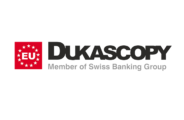Supply concerns are offset by concerns for growth - Less excitement in commodity markets in Q4
Due to numerous uncertainties, the environment for most commodities will remain highly volatile until the end of this year. While the signs of an impending recession are becoming clearer, the sector is unlikely to suffer serious damage before accelerating again in 2023. Our forecast of stable and even potentially higher prices is based on the current high key commodity niches across all three sectors : energy, metals and agricultural products. Against this backdrop, the Bloomberg commodity index, which monitors a basket of the 24 most important commodities, will maintain its previous year-on-day profit of + 20% until the end of the year.
This underlines the behavior of raw materials, where the price is ultimately determined by supply and demand. While there are concerns about economic growth and demand, the supply of a number of key commodities remains equally constrained. The dynamic boom in the first quarter was the result of the war, sanctions and the final stage of growth in demand for consumer goods and energy for their production, which took place after the pandemic. In June, the market went down sharply when the US Federal Reserve turbo-charged interest rate hikes as part of the fight against galloping inflation, and zero-Covid policies and problems with the real estate sector in China led to a sharp correction. In Q2021, however, the sector strengthened again, and although weaker demand niches appear, the supply side is also at risk - which in our opinion supports the long-term raw material price growth cycle, which we wrote about for the first time in early XNUMX.
About the Author
 Ole Hansen, head of department of commodity market strategy, Saxo Bank. Djoined a group Saxo Bank in 2008. Focuses on providing strategies and analyzes of global commodity markets identified by foundations, market sentiment and technical development. Hansen is the author of the weekly update of the situation on the goods market and also provides customers with opinions on trading goods under the #SaxoStrats brand. He regularly cooperates with both television and printed media, including CNBC, Bloomberg, Reuters, Wall Street Journal, Financial Times and Telegraph.
Ole Hansen, head of department of commodity market strategy, Saxo Bank. Djoined a group Saxo Bank in 2008. Focuses on providing strategies and analyzes of global commodity markets identified by foundations, market sentiment and technical development. Hansen is the author of the weekly update of the situation on the goods market and also provides customers with opinions on trading goods under the #SaxoStrats brand. He regularly cooperates with both television and printed media, including CNBC, Bloomberg, Reuters, Wall Street Journal, Financial Times and Telegraph.
The aforementioned numerous uncertainties mean primarily focusing on the demand side. There is no doubt that the intensified actions of central banks around the world, led by the US Federal Reserve, to fight galloping inflation through aggressive rate hikes in order to lower the economic temperature, will lead to some weakening of demand. In addition, the situation in China - the fight against the Covid pandemic that started a month ago and so far has not been successful, and severe anti-virus restrictions coupled with the real estate crisis - has led to an economic slowdown for the world's largest consumer of commodities. However, we believe that the current weakening in China is temporary and that as domestic inflationary pressures ease, the government and the People's Bank of China will step up their efforts to support the recovery.
Agricultural products
With relatively constant global food demand, the supply side will continue to guide prices. We anticipate many challenges that may cause price increases in the winter and spring of next year. The main culprits are fertilizer costs due to high gas prices, climate change and the "triple" weather phenomenon La Ninã in the winter season 2022/2023 in the northern hemisphere, which has changed temperatures around the world and led to a series of climate crises over the course of the last few years. In addition, there is Putin's war in Ukraine, which led to a sharp decline in exports from the main supplier of cereals and edible oils to the world market. Given the level of global stocks of key foods, from wheat and rice to soybeans and corn, already under pressure from weather conditions and export restrictions, the risk of further increases remains a clear and critical threat.
Gold and silver
Traders and investors in the market precious metals will continue to focus on the dollar and US bond yields, and the strength of both is the main reason why gold is falling year-over-year and is in the lower reaches of the current wide $ 300 range. However, given that we witnessed the strongest dollar rally and the fastest rate of real yield growth in the past few decades, this weakening was generally only visible against the dollar. Based on the above, we believe that gold's performance so far in 2022 is acceptable and indicates some grounds for a strengthening that is likely to occur once the dollar stops appreciating.
Gold is now broadly in the range of $ 1-600, and the direction until the end of the year is likely to be influenced by the dollar and the possible success of the US Federal Reserve in controlling inflation without plunging the US economy into recession. We believe that the latter will be a significant challenge and the market may be forced to overestimate future inflation expectations, currently priced below 2% in the one-year perspective. With the risk of a recession in the United States in 000 and sustained high inflation, we predict gold will perform well under this scenario, particularly should the dollar, as mentioned above, peak. After the sideline before the end of the year, these changes will accelerate investment in precious metals in 3, and with them the prospect of a return to the upper reaches of the above-mentioned range.

Our favorite is silvergiven the current low level of investor involvement and additional support from the recovering industrial metals sector, where supply, in particular aluminum and zinc, remains problematic due to extremely high gas and electricity prices. This has forced a reduction in production all over the world, primarily in Europe, but also in China, where, as a result of a long period of drought, steel mills struggle with electricity shortages.
Industrial metals
We are reiterating a long-term positive outlook for the industrial metals sector given the expected increase in demand due to the global drive towards electrification. In the case of copper, the leader in green metals, we predict that the prospect of a temporary capacity expansion next year by mining companies around the world, particularly in Central and South America and Africa, is likely to limit the short-term prospect of re-growth to a new record level.
Global electrification based on copper will continue to gain momentum after a year of intense weather pressure around the world and the need to become independent from energy produced in Russia, from natural gas to oil and coal. However, in order for power grids to be able to cope with the additional baseload, a significant amount of new copper-based investments will be required in the coming years. In addition, we are already seeing that producers like Chile - the world's largest copper supplier - are struggling to meet their production targets due to the decline in ore quality and water scarcity. The slowdown in China is seen as temporary, and the economic recovery from the incentives is likely to focus on infrastructure and electrification - areas that will require industrial metals.
Petroleum
Clothing has returned to pre-Russian levels as the market continues to price in the prospect of an economic slowdown that will negatively impact demand. The result is lower spot prices and a flattening of the forward price curve to an extent that is not yet backed by a corresponding increase in inventories. The question is whether the macroeconomic forecasts have led to prices falling to levels that are not yet justified by the current state of supply and demand.
There is no doubt that demand has fallen somewhat in recent months, in particular as a result of the end of the summer holiday season and the continuing, albeit temporary, lockdowns in China that hinder mobility and economic growth. In Europe, extremely high gas and electricity prices have also slowed fuel demand, but the region continues to import around 3 million barrels a day from Russia. The introduction of the import embargo on December 5 is likely to significantly reduce supply across the market as Russia struggles to find other buyers.
We believe that the current weakness in oil fundamentals is temporary and agree with the main analysts of this market at the EIA, OPEC and IEA, who, despite the current concerns about economic growth, reiterated their forecasts of demand growth in 2023. In the last quarter of this year, prices will probably be under pressure from negative factors at times, which means that the potential lower range for Brent crude oil may amount to USD 80-100 per barrel . The most important price drivers are:
- China continues to fight the Covid pandemic with additional incentives to counterbalance risks to growth
- The process of switching from gas to fuels supporting the demand for distilled products
- The EU embargo on Russian oil has the potential to reduce Russian production
- US planned to start replenishing strategic reserves
- Threat to reduce production by OPEC in the event of a further decline in prices
- Direction of inflation in the United States and the dollar exchange rate - key factors affecting the overall level of risk appetite
- A production increase in the United States that is showing signs of slowing down and thus providing price support
The cash-flowing major oil companies and investors with little appetite for investing in new discoveries suggest that the cost of energy is likely to remain high for years to come. The reason for this is the green transition, which is getting more and more attention, and which will eventually start lowering global demand for fossil fuels. It is the timing of this transformation that causes the investment appetite to remain low. Unlike new drilling methods, such as fracking, where effective production can be started in just a few months, traditional oil production projects often require multi-year investments of billions of dollars to do so. Accordingly, oil companies planning to invest in new production will not focus on spot prices around USD 90 for Brent crude oil and lower for WTI crude oil, but on prices over USD 30 lower currently quoted on the market for futures contracts with a delivery date. in five years time.






















![Forex Club – Tax 9 – Settle tax on a foreign broker [Download the Application] Forex Club - Tax 9](https://forexclub.pl/wp-content/uploads/2024/02/Forex-Club-Podatek-9-184x120.jpg?v=1709046278)
![Trading View platform – solutions tailored to the needs of traders [Review] trading view review](https://forexclub.pl/wp-content/uploads/2024/03/trading-view-recenzja-184x120.jpg?v=1709558918)
![How to connect your FP Markets account to the Trading View platform [Guide] fp markets trading view](https://forexclub.pl/wp-content/uploads/2024/02/fp-markets-trading-view-184x120.jpg?v=1708677291)
![How to invest in ChatGPT and AI? Stocks and ETFs [Guide] how to invest in chatgpt and artificial intelligence](https://forexclub.pl/wp-content/uploads/2023/02/jak-inwestowac-w-chatgpt-i-sztuczna-inteligencje-184x120.jpg?v=1676364263)






![Izabela Górecka – “Success on the market depends not only on knowledge, but also on emotional stability” [Interview] Izabela Górecka - interview](https://forexclub.pl/wp-content/uploads/2024/04/Izabela-Gorecka-wywiad-184x120.jpg?v=1713870578)
![WeWork – the anatomy of the collapse of a company valued at $47 billion [WeWork, part II] wework bankruptcy story](https://forexclub.pl/wp-content/uploads/2024/04/wework-bankructwo-historia-184x120.jpg?v=1711729561)
![Adam Neumann – the man who screwed up Softbank [WeWork, part AND] adam neumann wework](https://forexclub.pl/wp-content/uploads/2024/04/adam-neumann-wework-184x120.jpg?v=1711728724)


![The most common mistakes of a beginner trader - Mr Yogi [VIDEO] Scalping - The most common mistakes of a beginner trader - VIDEO](https://forexclub.pl/wp-content/uploads/2024/03/Scalping-Najczestsze-bledy-poczatkujacego-tradera-VIDEO-184x120.jpg?v=1711601376)
![Learning patience: No position is also a position - Mr Yogi [VIDEO] Scalping - Learning patience - No position is also a position - VIDEO](https://forexclub.pl/wp-content/uploads/2024/03/Scalping-Nauka-cierpliwosci-Brak-pozycji-to-tez-pozycja-VIDEO-184x120.jpg?v=1710999249)
![When to exit a position and how to minimize losses - Mr Yogi [VIDEO] Scalping - When to exit a position and how to minimize losses - VIDEO](https://forexclub.pl/wp-content/uploads/2024/03/Scalping-Kiedy-wyjsc-z-pozycji-i-jak-minimalizowac-straty-VIDEO-184x120.jpg?v=1710336731)











Leave a Response